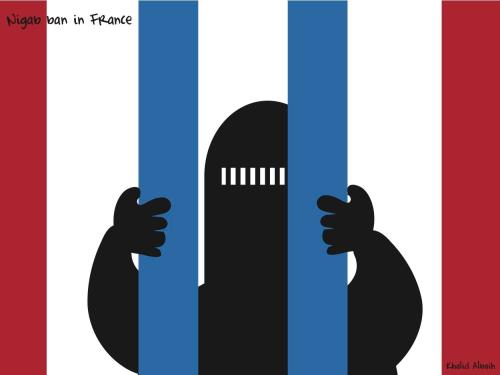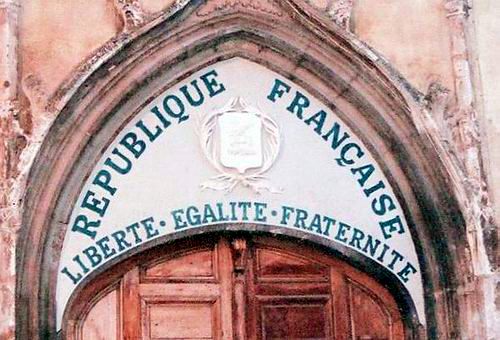This post was originally published at the Gender and Society blog and is republished here by permission of the author, Afshan Jafar, member of the editorial collective at University of Venus.
The short film, “Oppressed Majority” by French director Éléonore Pourriat is a powerful video showing a reversed reality: a society where women and men have traded places and experiences. The 10-minute film shows a day in the life of Pierre, who is a father and a husband, going about his day. From unwanted attention, to harassment, to assault, the film details his experiences with women (who are the harassers and the attackers). The film does an excellent job of revealing the sexism, threats, and attacks that women deal with everyday, and the absurdity of the responses they have to deal with in light of such experiences. One can see the tentativeness with which Pierre walks, the discomfort and shame he feels with the unwanted attention and harassment and the downright trauma of having been sexually assaulted. In brief, the film is able to visually capture what it’s like for women everyday. For accomplishing that particular task, the film is worth watching and sharing.
However, the film also provides some (unintentional) fodder for considering some of the complexities of fighting for women’s rights, when we are not cognizant of the multiple layers of privilege and oppression in a society. While the short video was extremely effective in highlighting sexism, its problematic depiction of non-white French people is worth noting in more detail. What are some of the roles that non-white French people portray in this movie and what does their depiction tell us about France’s view of its racial and ethnic minorities?
One of the first characters we come across is a Muslim man, Nissar, who is wearing a hijab. Pierre’s response is to try and “educate” Nissar. He tells him “I’m afraid you look like a child” and goes on to say “You don’t belong to anyone, do you understand?”(emphasis added). Nissar in the meantime, appears quite jovial, speaks very little, smiles broadly, and shrugs his shoulders—as if he really doesn’t understand or rather, is incapable of understanding. This scene reveals what has now become France’s well-known discomfort with the hijab. In representing Nissar in this fashion, the perception of Muslim women as helpless victims (who don’t even seem to understand that they are being oppressed) at the hands of their oppressive husbands is all too obvious. That Nissar indeed acts like a child (by speaking very little and smiling profusely) implies that he does not have the mental capacity of reasoning that Pierre—an educated, enlightened, white, French man—does.
Next we see a panhandler, who is dark-skinned and appears to wear dreadlocks. She is aggressive, threatening and all her remarks are sexual. Pierre takes off on his bicycle just as the threat of a physical attack starts to seem imminent. Here again, we have the old racist ideology of non-white people (especially Africans) as sexually aggressive, animalistic and especially threatening to white women, rearing its ugly head.
The next scene, and the most disturbing in the short film is the assault. As Pierre is getting off of his bicycle, he sees a woman urinating in the street. The woman’s name is Samia. One can assume from her name that she is of Maghrebin (North African/Middle-Eastern) or Muslim origin. Her friends, who go on to sexually assault Pierre, also seem to be of Maghrebin origin (if any of them are white, it’s hard to tell since they are all dark featured). The above depictions fall very easily into the Muslim man—or in the case of this flipped video, Muslim woman—as oppressor and attacker, and a threatening Outsider in France. France’s recent treatment of Muslim immigrants, such as banning the headscarf in schools, and banning the niqab in all public spaces, all in the name of protecting a “French” identity, reveals just how threatened France is by its Maghrebin immigrants. In the video, Samia is quite literally soiling France by her actions.
But how do the depictions of these women compare to the depictions of white women in the video? We see white women in various roles: topless runners, a police officer, and Pierre’s wife. While none of these women are presented in a positive light, none of them are overtly threatening either. They are unsympathetic and unsupportive, but they do not invoke fear the way that the other women of color in the film do. Finally, Pierre’s white, blonde wife, is allowed to revert to her feminine (and thus sympathetic) status at the end of the film, where the flipped reality comes to an end and she becomes the target of harassing calls in the dark. There is no such reversion for the other characters who remain despicable and threatening.
So who is under attack here and by whom? I believe that while this video is ostensibly about gender, it unwittingly reveals France’s anxieties about the Other. And although this video may be challenging gender inequality, it does so at the expense of upholding racist ideologies about France’s Other.










